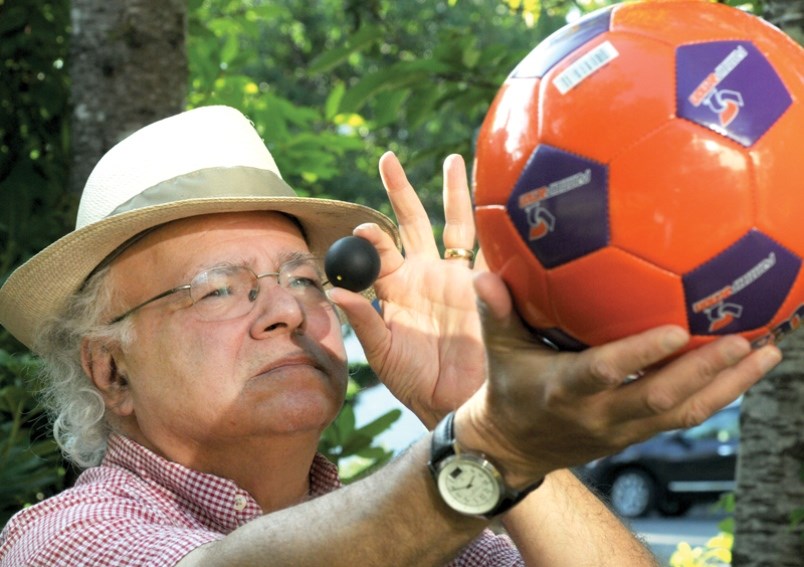Stanley Greenspoon is watching the weather forecasts closely.
The Capilano University professor emeritus and Royal Astronomical Society of Canada member is headed south to Oregon this weekend to catch a once-in-a-lifetime event: A total eclipse of the sun, viewable across 13 American states.
Perhaps that should be many lifetimes, as the next one visible in Vancouver won’t happen until 2771.
Starting around 9:30 a.m. Monday morning, the moon’s orbit will pass directly between the earth and the sun. Just after 10 a.m. for two minutes, there will be a total eclipse, although here in the Lower Mainland, it will be closer to 86 per cent blotted out.
“Partial is impressive in that part of the sun is bitten away by the moon. Unfortunately, it doesn’t really get dark,” he said.
Asked what he’ll be doing during those two minutes, Greenspoon laughed.
“Looking at it,” he said. “It actually looks like twilight. Animals respond in strange ways. Insects come out. “You can actually see bright stars and any planets that are visible at night for that short period of time when the sun is completely obscured by the moon. … It actually gets cooler, typically by about five degrees (Celsius) because of the lack of sunlight.”
The sun is about 400 times greater in diameter than the moon but, by coincidence, it’s also 400 times farther way, creating the appearance that they are roughly the same size. The orbit of Earth around the sun and the moon around Earth are offset by about five degrees, meaning the three come into alignment on rare but predictable occasions.
“Otherwise you would have eclipses every month,” Greenspoon said.
The last time a total eclipse was viewable in this part of the world was in 1979.
Giddy as he and the rest of the astronomical community are about the prospect of a total eclipse, Greenspoon is deadly serious about wearing proper eye protection for those looking upward.
“There’s a lot of dangerous infrared and ultraviolet light, which is not blocked and which will burn your retina,” he said. “I want to emphasize that it’s extremely dangerous to look at the sun with naked eyes. You have to have proper eclipse glasses or an eclipse solar viewer. You can’t use any other method to try to protect your eyes because you can go blind. It is really very serious.”
Many retailers who stocked up on approved viewing glasses quickly found them sold out. This month’s edition of Sky News Magazine, which is still on newsstands, has an insert with proper eclipse glasses.
Welding goggles shouldn’t be used as a substitute and people should also be wary of glasses being sold online, Greenspoon said.
“Unfortunately, can you believe it? There are unscrupulous people selling counterfeit ones to make a buck,” he said.
The Royal Astronomical Society of Canada and Telus World of Science on False Creek are collaborating on a viewing party from 9 a.m. until noon on Monday. There will be a supply of shared eclipse viewers for people to use.
Otherwise people can look online for instructions on how to make a viewing box that uses a pinhole projector to get an indirect glimpse of the sun.
The first precise prediction of an eclipse was made by Edmond Halley (of the comet fame) who did calculations by hand and noted within a few minutes when the totality of 1715 could be expected. Prior to the common acceptance of the heliocentric solar system, eclipses were taken to be bad omens.
Oddly enough, the moon is gradually shifting more distant from the earth by about four centimetres every year so, on a cosmic timeline, eventually there will be no eclipses at all.
“If you wait millions and millions of years, the moon will not cover the sun. I don’t know how many millions of years you’re going to have to wait,” he said.
Statistically, every spot on Earth is likely to be in the “path of totality” every 350 years, so in that respect, Vancouver is unlucky, with the next one so far away.
In the meantime, Greenspoon will have to pray the sky remains free of clouds on Monday morning. In order to see another eclipse here again, he’ll have to wait another 754 years.
- From the North Shore News.



